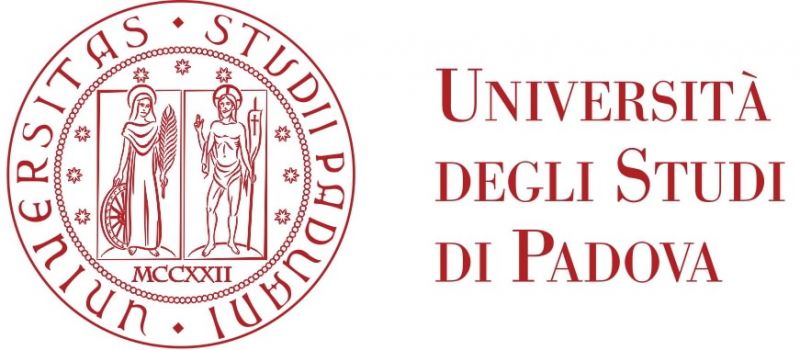2020
M. Todescato, N. Bof, G. Cavraro, R. Carli, L. Schenato.
Partition-based multi-agent optimization in the presence of lossy and asynchronous communication. Automatica, vol. 111, pp. 1-11, 2020 [
url] [
BibTeX]
2019
N. Bof, R. Carli, G. Notarstefano, L. Schenato, D. Varagnolo.
Multiagent Newton-Raphson Optimizaton over lossy networks. IEEE Trans. Automatic Control, vol. 64(7), pp. 2983 - 2990, 2019 [
url] [
BibTeX]
2018
N. Bof, R. Carli, L. Schenato.
Is ADMM always faster than Average Consensus?. Automatica, vol. 91, pp. 311-315, 2018 [
url] [
BibTeX]
2017
N. Bof, R. Carli, A. Cenedese, L. Schenato.
Asynchronous Distributed Camera Network Patrolling under Unreliable Communication. IEEE Transactions on Automatic Control, vol. 62(11), pp. 5982-5989, 2017
Abstract:
In this paper, we study the problem of real-time optimal distributed partitioning for perimeter patrolling in the context of multicamera networks for surveillance, where each camera has limited mobility range and speed, and the communication is unreliable. The objective is to coordinate the cameras in order to minimize the time elapsed between two different visits of each point of the perimeter. We address this problem by casting it into a convex problem in which the perimeter is partitioned into nonoverlapping segments, each patrolled by a camera that sweeps back and forth at the maximum speed. We then propose an asynchronous distributed algorithm that guarantees that these segments cover the whole patrolling perimeter at any time and asymptotically converge to the optimal centralized solution under reliable communication. We finally modify the proposed algorithm in order to attain the same convergence and covering properties even in the more challenging scenario, where communication is lossy and there is no channel feedback, i.e., the transmitting camera is not aware whether a packet has been received or not by its neighbors.
[
url] [
pdf] [
BibTeX]
N. Bof, R. Carli, L. Schenato.
Average Consensus with Asynchronous Updates and Unreliable Communication. Proceedings of IFAC Word Congress, 2017
Abstract:
In this work we introduce an algorithm for distributed average consensus which
is able to deal with asynchronous and unreliable communication systems. It is inspired by
two algorithms for average consensus already present in the literature, one which deals with
asynchronous but reliable communication and the other which deals with unreliable but
synchronous communication. We show that the proposed algorithm is exponentially convergent
under mild assumptions regarding the nodes update frequency and the link failures. The
theoretical results are complemented with numerical simulations.
[
pdf] [
BibTeX]
N. Bof, R. Carli, L. Schenato.
Lyapunov Theory for Discrete Time Systems. (Technical Report), 2017 [
pdf] [
BibTeX]
2016
N. Bof, R. Carli, L. Schenato.
On the performances of consensus based versus Lagrangian based algorithms for quadratic cost functions. European Control Conference 2016 (ECC'16), 2016
Abstract:
In this paper we analyze the performances of some popular algorithms used to solve distributed optimization problems involving quadratic cost functions in a multi agent system. Namely, we study the performances of standard consensus, accelerated consensus and ADMM. We analyze the scalar quadratic function case, under different scenarios and with structured graphs. We find that accelerated consensus is the algorithm with the best performance in all the cases analyzed. On the other hand, ADMM has performance comparable to the accelerated consensus when the graph is scarcely connected, while for dense graphs its performance deteriorates and becomes worse than the one of standard consensus. The results therefore suggest that the choice of the algorithm to solve the problem we analyze strongly depends on the graph, and that accelerated consensus should always be preferred.
[
url] [
BibTeX]
N. Bof, G. Baggio, S. Zampieri.
On the role of network centrality in the controllability of complex networks. IEEE Transactions on Control of Network Systems, 2016
Abstract:
In recent years complex networks have gained in-
creasing attention in different fields of science and engineering.
The problem of controlling these networks is an interesting and
challenging problem to investigate. In this paper we look at the
controllability problem focusing on the energy needed for the
control. Precisely not only we want to analyze whether a network
can be controlled, but we also want to establish whether the
control can be performed using a limited amount of energy.
We restrict our study to irreducible and (marginally) stable
networks and we find that the leading right and left eigenvectors
of the network matrix play a crucial role in this analysis.
Interestingly, our results suggest the existence of a connection
between controllability and network centrality, a well-known
concept in network science. In case the network is reversible, the
latter connection involves the PageRank, an extensively studied
type of centrality measure. Finally, the proposed results are
applied to examples concerning random graphs.
[
pdf] [
BibTeX]
N. Bof, M. Todescato, R. Carli, L. Schenato.
Proofs of Robust Estimation for Localization in Lossy SN. 2016 [
pdf] [
BibTeX]
N. Bof, M. Todescato, R. Carli, L. Schenato.
Robust Distributed Estimation for Localization in Lossy Sensor Networks. 6th IFAC Workshop on Distributed Estimation and control in Networked Systems (NecSys16), pp. 250–-255, 2016 [
pdf] [
BibTeX]
2015
N. Bof, E. Fornasini, M.E. Valcher.
Output feedback stabilization of Boolean control networks. Automatica, vol. 57, pp. 21--28, 2015
Abstract:
In the paper output feedback control of Boolean control networks (BCNs) is investigated. First, necessary and sufficient
conditions for the existence of a time-invariant output feedback (TIOF) law, stabilizing the BCN to some equilibrium point,
are given, and constructive algorithms to test the existence of such a feedback law are proposed. Two sufficient conditions for
the existence of a stabilizing time-varying output feedback (TVOF) are then given. Finally, an example concerning the lac
Operon in the bacterium Escherichia Coli is presented, to illustrate the effectiveness of the proposed techniques.
[
pdf] [
BibTeX]
2013
S. Bolognani, N. Bof, D. Michelotti, R. Muraro, L. Schenato.
Identification of power distribution network topology via voltage correlation analysis. Conference on Decision and Control (CDC13), 2013 [
pdf] [
BibTeX]



